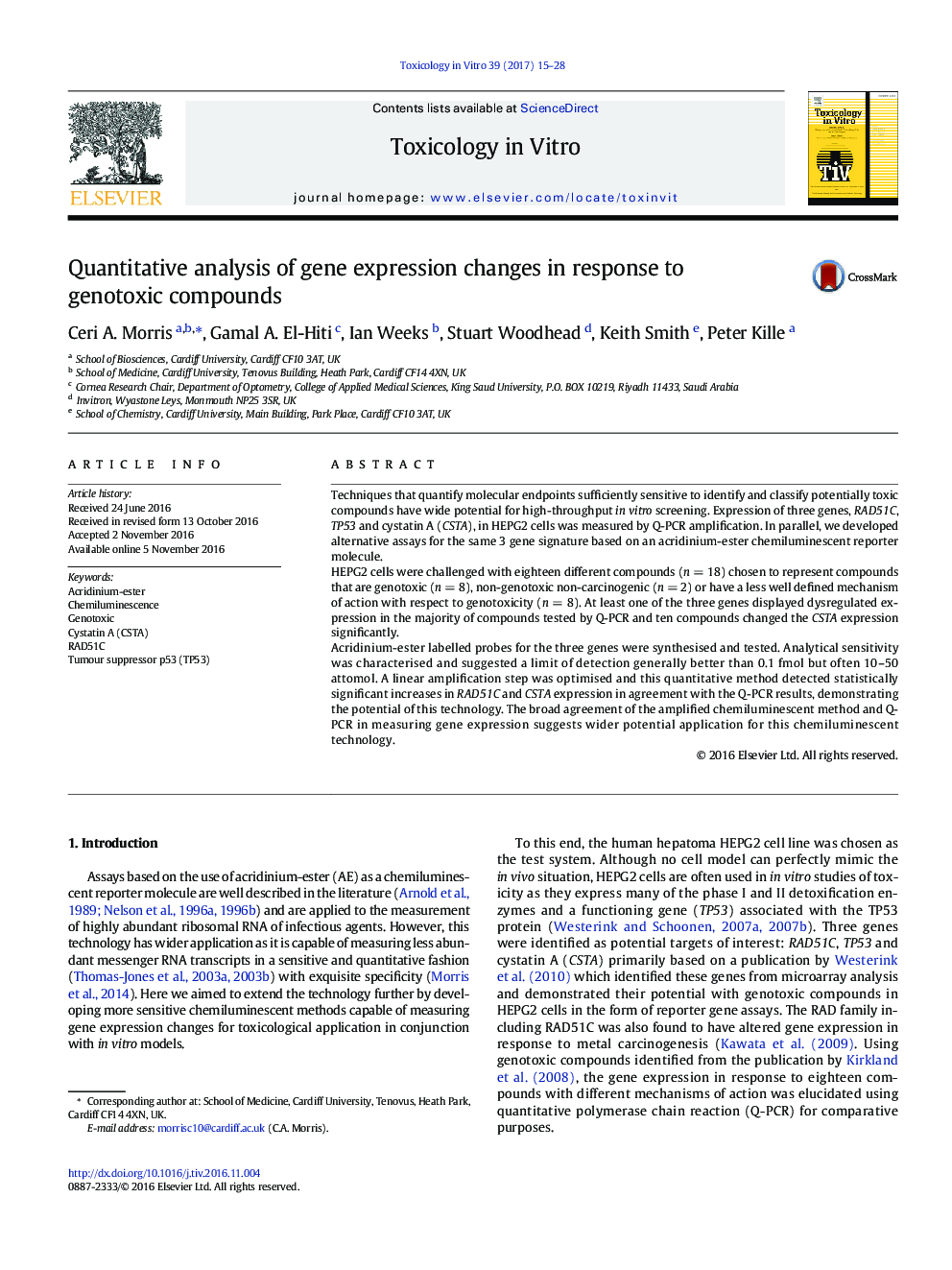| Article ID | Journal | Published Year | Pages | File Type |
|---|---|---|---|---|
| 5562742 | Toxicology in Vitro | 2017 | 14 Pages |
â¢Development of in vitro assays to measure 3 genes (RAD51C, CSTA, TP53).â¢Expression profiles in response to exposure of HEPG2 cells to 18 compoundsâ¢CSTA dysregulation was the most effective indicator of exposure.â¢Optimisation of a novel method for chemiluminescent detection of nucleic acid targetsâ¢New format is capable of detecting gene expression levels in cell lines.
Techniques that quantify molecular endpoints sufficiently sensitive to identify and classify potentially toxic compounds have wide potential for high-throughput in vitro screening. Expression of three genes, RAD51C, TP53 and cystatin A (CSTA), in HEPG2 cells was measured by Q-PCR amplification. In parallel, we developed alternative assays for the same 3 gene signature based on an acridinium-ester chemiluminescent reporter molecule.HEPG2 cells were challenged with eighteen different compounds (n = 18) chosen to represent compounds that are genotoxic (n = 8), non-genotoxic non-carcinogenic (n = 2) or have a less well defined mechanism of action with respect to genotoxicity (n = 8). At least one of the three genes displayed dysregulated expression in the majority of compounds tested by Q-PCR and ten compounds changed the CSTA expression significantly.Acridinium-ester labelled probes for the three genes were synthesised and tested. Analytical sensitivity was characterised and suggested a limit of detection generally better than 0.1 fmol but often 10-50 attomol. A linear amplification step was optimised and this quantitative method detected statistically significant increases in RAD51C and CSTA expression in agreement with the Q-PCR results, demonstrating the potential of this technology. The broad agreement of the amplified chemiluminescent method and Q-PCR in measuring gene expression suggests wider potential application for this chemiluminescent technology.
